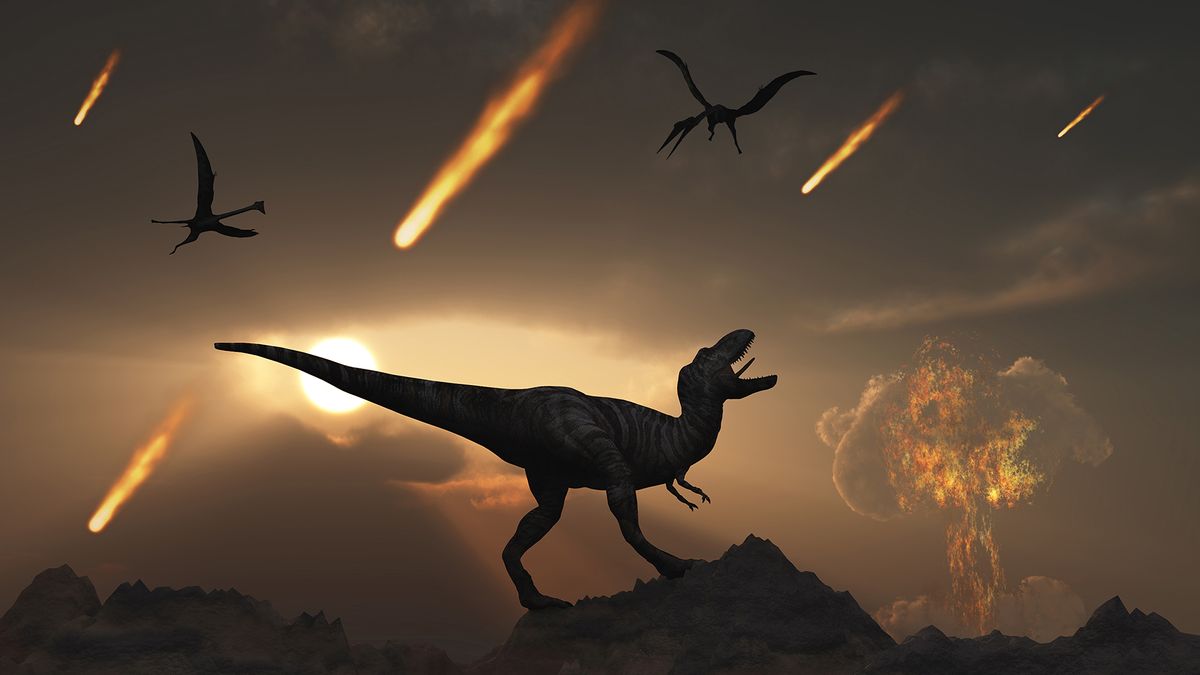How Long Did The Dinosaurs Actually Survive After The Asteroid?

About 66 million years ago, an asteroid the size of Mount Everest slammed into the Yucatan Peninsula at 28 times the speed of an AK-47 bullet. The impact released the energy of 10 billion Hiroshima bombs, triggering the KT extinction event—one of the fastest and most violent extinction events in history. More than 75% of all species on Earth disappeared, and nearly all species weighing more than 55 pounds (25 kg) did not survive. The non-avian dinosaurs—which had roamed the earth for 165 million years—were wiped out.
Despite being called “The Day of the Dinosaurs,” paleontologists believe the extinction was not instantaneous. Dinosaurs existed on every continent during the late Cretaceous and were extremely diverse, with more than 1,000 different species when the asteroid hit. Small, young, or well-protected species may have survived the first day. However, the impact caused sudden and severe environmental changes, such as high temperatures, wildfires, shock waves, earthquakes, and tsunamis that devastated the Western Hemisphere, killing many creatures in minutes.
Then, tens of trillions of tons of superheated material were ejected into the atmosphere, heating the air to “oven” levels, burning nearly 70% of the world’s forests and killing many species from within. Only a few species survived in protected areas such as humid tropical forests, swamps, or highlands. The surviving dinosaurs were mostly small and young, as they were better able to find shelter than larger species.
However, the disaster did not stop there. The ash and gases from the fires blocked out sunlight, leading to a nuclear winter with average temperatures dropping by 20°C and permanent darkness. The drop in temperature and lack of light decimated the ecosystem, with herbivores in particular suffering as their food was burned away. Some herbivores were lucky enough to survive by finding patches of vegetation, but this did not last long. As herbivores declined, so did carnivores, with one study suggesting that all non-avian dinosaurs became extinct within 15 years of the impact.

Other studies have suggested that the extinction took hundreds or even thousands of years, suggesting that small groups of dinosaurs may have survived into the early Paleogene. A 2013 study suggested that the impact took around 33,000 years to wipe out all non-avian dinosaurs, with some species surviving as the environment stabilized after that time. While mammals and insects grew in size, giant turtles and crocodiles became the largest animals, creating a world far removed from the one dominated by dinosaurs.
One controversial discovery is that dinosaur fossils in the San Juan Basin, Colorado and New Mexico, suggest that dinosaurs may have survived for up to half a million years after the impact. These fossils were found in Paleocene strata, which has sparked debate about how they survived for so long and why only near the impact site. One theory is that this area may have been a mountainous region that protected them from the direct impact of the impact. Another is that these dinosaurs migrated from as far north as Alberta, where the asteroid impact was less severe, south to find food sources that remained.
The final theory is that dinosaur eggs, protected in nests, survived the initial impact and hatched after the environment stabilized. If this hypothesis is correct, the young dinosaurs could have survived for several hundred thousand years, witnessing significant changes to the Earth.
However, most scientists believe that these fossils are actually erosion samples that were re-deposited in new geological layers, leading to confusion about the time of dinosaur extinction.








